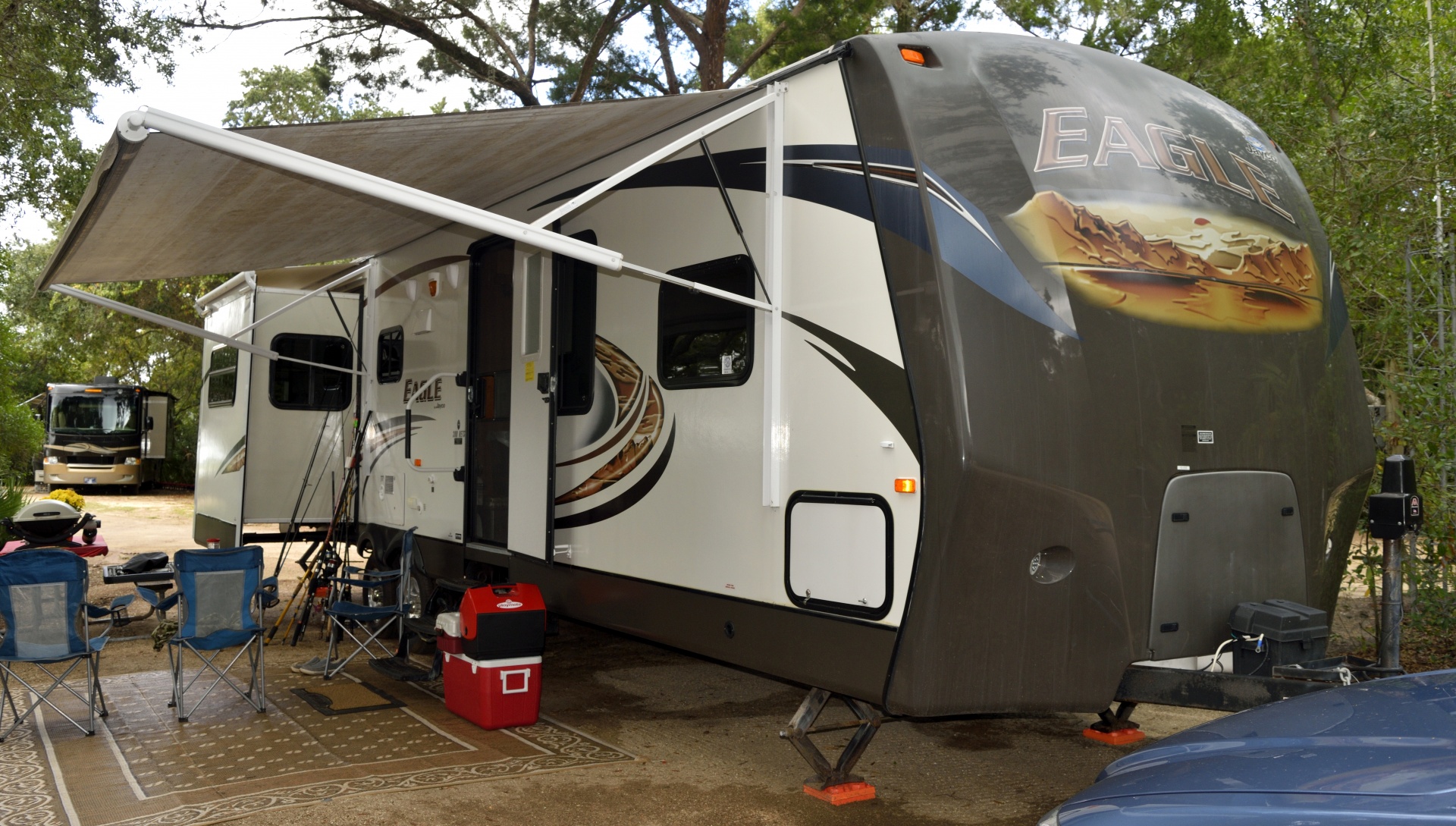Among the most enjoyable ways of spending quality time with your family is hitting the road in an RV. It allows you to be on the move without having to constantly pack and unpack or shove all your luggage into a tiny space for long durations. The biggest advantage of taking off in an RV is that it offers you a constant roof over your head as if it were a home away from home!
Add the provision of free RV camping/reserve RV parks and campgrounds into the mix, and you’ve got the perfect camping trip in your hands. It doesn’t get better than this!
Add the provision of free RV camping/reserve RV parks and campgrounds into the mix, and you’ve got the perfect camping trip in your hands. It doesn’t get better than this!
1. Always Secure Everything Inside the RV
An RV is typically equipped and furnished with several movable items. Sometimes, when an RV comes to halt (especially suddenly) or makes unexpected turns, these items can come loose and fall on the floor or on the passengers, including the kids. For example, a cabinet door may open up without a warning and its contents may spill out. It is, therefore, crucial that all items in an RV are adequately secured at all times.
In case of a collision, unsecured items can cause even more harm. In the event of the RV rolling over, items such as kitchen equipment and other tools can become unhinged, causing serious injuries and even death.
To prevent such disastrous scenarios, it is highly recommended to store heavy items below and lighter items on top. Also, use anti-skid shelf lining to secure contents in cabinets and open storage doors cautiously to prevent the contents from falling out.
2. Install Car Seats
Using car seats in an RV for children’s safety is imperative. The National Highway Traffic Safety Administration (NHTSA) and the Centers for Disease Control and Prevention (CDC) have laid out specific guidelines for which car seats are to be used in RVs.
Most car seat manufacturers do mention the maximum and minimum height and weight specifications for each car seat. Here is a quick summary of what kind of car seat should be used, depending on the child’s age group.

That said, it is important that children are properly secured in a car seat that is also in accordance with their height and weight.
3. Child-Proof the RV
Child-proofing the RV refers to removing anything that could pose a danger to your child. Start by looking around the area within his/her reach as he/she is seated in the car seat. Secure (or remove, if possible) all the following:
- Any item that can potentially fall on the child, such as objects on an overhead shelf
- Pointed objects and toxic cleaners that are within the reach of the child
- Moveable items that are not meant to be used by children
- Hanging cords
- Slide-outs, window screens, and the red handle on the emergency escape window
4. Educate Your Kids on RV Safety Rules
While traveling in an RV is an enjoyable experience for children, parents should develop a list of certain dos and don’ts for the kids. The children should be asked to mandatorily follow the list as stringent rules for their safety. Before taking off for an RV sojourn, make sure to explain your rules to your kids and ask them to follow these three most basic ones whenever the RV is moving:
- Never distract the driver in any way
- Ensure proper buckling of the car seat belt
- Always remain seated when the RV is in motion
5. Choose the Right RV Type
Go for an RV that meets the Federal Motor Vehicle Safety Standard 208. Further, knowing about the different types of RVs will help you decide on the right kind for yourself, bearing in mind the safety of your children.
- Class A RVs: Largest in size with sleeping capacity for up to eight people, they have a huge living space and feature most of the amenities available in a home.
- Class B RVs: Smallest in size with sleeping capacity for up to four people, they are equipped with most small home appliances. The living space is small and may come with or without a self-contained toilet.
- Class C RVs: Midsize with sleeping capacity for up to eight people, the living and sleeping areas are smaller than Class A.
- Travel Trailers: Trailers (fifth wheels, travel trailers, pop-up campers, and more) are pulled behind a truck, and require a tow vehicle to get to the campsite.
Conclusion
Camping and RV often go together. A lot of families across America consider camping a great way to explore the country and spend time together. You and your kids are sure to enjoy it too. All you need to do is plan for what will work best for your family and get going in your RV. It is, however, important to take certain precautions to avert any untoward incident while you’re on the road. By following the above mentioned safety tips, you will be able to enjoy a fun-filled and memorable adventure with your children. Always remember that RV safety is of paramount importance and the rules apply to any vehicle being used to get to any destination.


